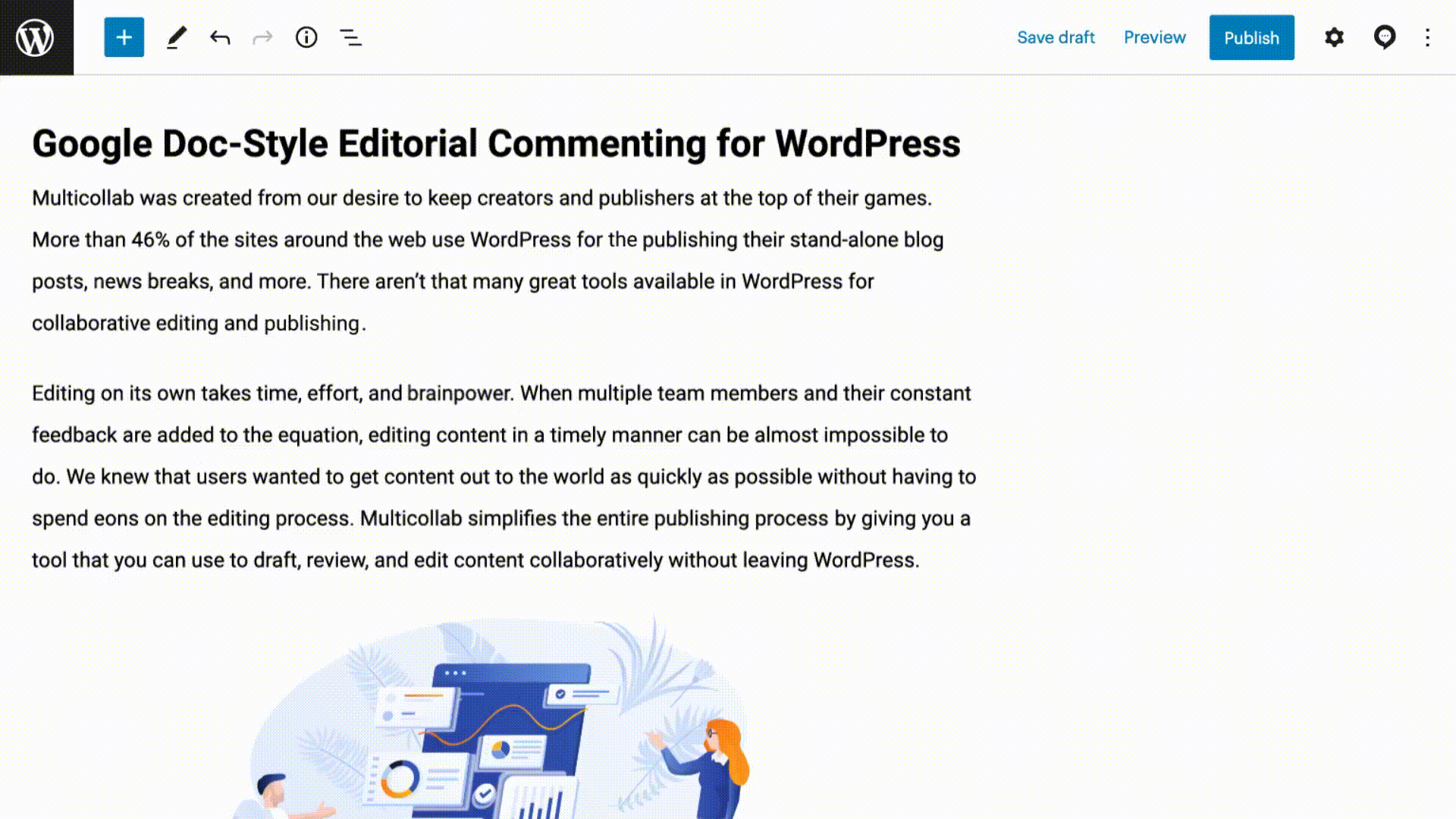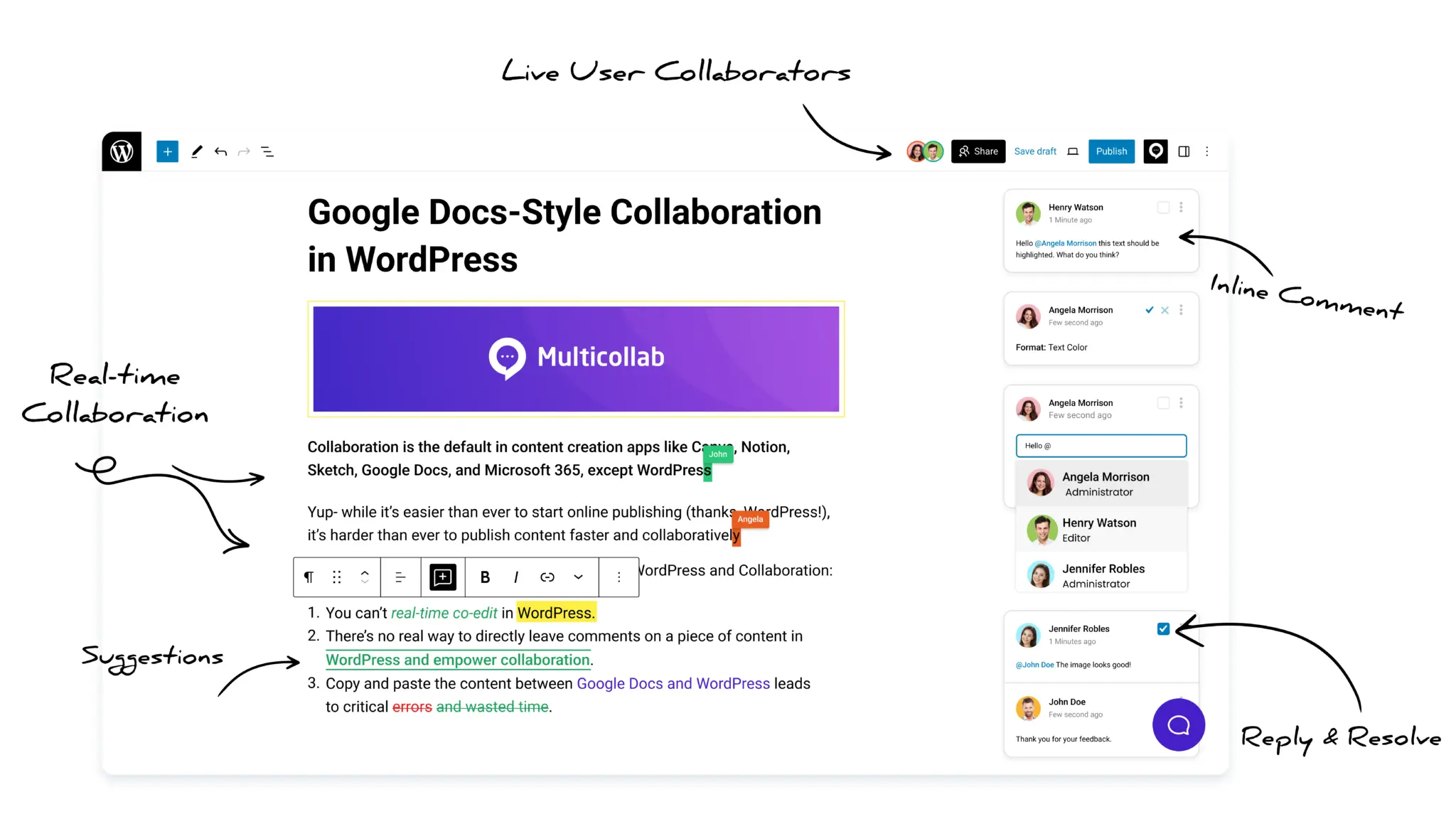Table of Contents
In the fast-paced world of content creation, maintaining a high standard of quality is paramount. Whether you’re running a blog, a news outlet, or any other type of publication, an effective editorial review process is key to ensuring your content meets the expectations of your audience. The editorial review process determines whether a content piece is fit for publication. Authors, bloggers, researchers who write for scientific journals, etc., all rely on this process to make sure their readers get the best content.
In this guide, we’ll explore strategies and tips to enhance your WordPress editorial workflow and review process, streamline workflows, and ultimately deliver top-notch content. Let’s take a closer look at the editorial process in WordPress publishing and how you can improve this process for your WordPress sites.
Readability, grammatical correctness, factual accuracy, uniqueness, and utility for the reader are a few things that content editors look for before publishing. Usually, your content review process has to ensure that the draft has the following qualities.

Four crucial steps of the editorial review process
harnessThe editorial review process is a dynamic journey influenced by various factors like content purpose, available resources, and deadlines. Despite these variables, a typical editorial review process can be distilled into four essential steps:
- Pre-check: This is the step that occurs before the ‘actual’ editorial process for publishing begins. In this step, the authors of the draft conduct a preliminary check to make sure that the content is ready for publication on their part.
- Peer review: Authors from other teams and editors thoroughly check the submitted draft. In some cases, the editors make some edits to the content piece by themselves to expedite the process.
- Editor’s decision: If the draft is approved, it is passed on to the publisher. If not, it is either rejected or sent to the authors with editorial suggestions. While providing suggestions, editors have to be mindful and provide actionable feedback.
- Revision and author’s appeal: After receiving suggestions, the authors can either defend their argument or make changes and resubmit. The four steps are continued until the draft is approved for publication.
A good editorial workflow can assist with content marketing strategy and search engine optimization (SEO). Let’s take a look at how you can make your editorial process better.
How to improve your editorial workflow?
All editorial processes can be improved in one way or the other. In some cases, you just need to adopt the right tools and in others, you have to rethink your entire workflow. Also, the preferred way of improvement depends on the resources available.
Consequently, how you can (and will) upgrade your editorial workflow is entirely unique. But with so many variables, it can be confusing to determine a good starting point.
Hence, here are five common tips that will help you examine and improve various aspects of your editorial workflow.
1. Educate everyone about the objectives
Earlier in this post, we touched upon why an editorial review process is important for content. Apart from improving the quality and ROI potential of the content, a good editorial workflow also maintains the reputation of the publication/website and gets editorial reviews.
The reputation of the publisher directly impacts how well a piece will be received and editorial reviews present a great content marketing opportunity.
Everyone involved in the content editorial and review process should be aware of the aforementioned objectives. This helps the team members see the big picture which aligns various workflows and simplifies collaboration.
A presentation deck or a visual workflow designer sketch, as shown below, are quick means to help everyone understand the process they are a part of and get on the same page.

2. Assign responsibilities to every team member
While explaining the editorial process to your content team you can remain a little vague and use abstract tools for that. However, this tip requires you to be a lot more specific as it involves the way the daily operations will be run.
At every stage of the editorial review process, each of your team members have unique responsibilities. As the user role editor and content manager, you have to make sure your team members are aware of that and have the knowledge to carry them out.
Keep in mind that these duties might vary depending on projects and immediate requirements, the overall duties often remain the same. You can let your team members know about what they need to do when they join the team and also through a detailed internal knowledge base.
3. Use a content review checklist at every step
Checklists help ‘automate’ manual and repetitive processes which can make your content editorial process faster and more accurate. As they will contain all the areas that need to be examined and parameters to be monitored, they are an invaluable tool during content collaboration.
Many processes such as checking keyword density, grammatical correctness, formatting, etc., can be made efficient with the help of these checklists. The points in each checklist have to be collectively decided as they depend on many things such as the client’s requirements and the publisher’s guidelines.
However, content review checklists cannot help define the steps during each phase of the content review process. For example, you need a manual approach while proofreading the body of the draft to check the factual accuracy.
4. Keep iterating; create multiple workflows for better efficiency
We mentioned a few times above how you should be mindful of the variables while approaching the editorial process. As the requirements change, so should the steps of your content marketing strategy and editorial and workflow process.
The digital content sphere is continually changing. The needs of the market, the desired format, the rules of publications, etc., evolve drastically in short intervals. This necessitates the timely iteration of your editorial review process.
You have to empower your team with the right data, data, and authority to make modifications to how you create and review content. This can be easily done through honest and transparent communication during retrospective meetings at regular intervals.
5. Adopt the best workflow plugin and tools for collaboration
All the four steps of the editorial approval process for publishing are a form of collaboration where relevant members at each step of edit flow of the review process share their feedback with each other until they unanimously agree that the draft is ready for publication.
The tools used during these phases determine the efficiency of the overall process.
Third-party content collaboration tools such as Google Docs and Microsoft Word are widely used during the editorial and review process due to their collaborative features. However, using them also had its own challenges which slowed down the process and increased the margin of error, particularly for WordPress content and editorial teams.
The inability to review videos and dynamic content, giving unrestricted access to organizational data to members outside of the organization, and back and forth of content to the WordPress editor are the crucial challenges that content teams had to deal with.
Fortunately, all of that is a thing of the past, thanks to Multicollab.
Multicollab, a WordPress collaboration plugin, enables Google Docs-style content collaboration in the Gutenberg Editor. You can tag, suggest, and comment to share your reviews just as you do in various third-party content editing apps.
Furthermore, since the Gutenberg Editor is a blog editor, you can exchange feedback on all content types including videos and dynamic content.

Summing up
An editorial review process improves the content quality, adds to its business value, and helps maintain the reputation of the publication.
There are four crucial steps in an editorial review and publication process: pre-check, peer review, editor’s decisions, and revision and author’s appeal. The four steps are repeated until the draft is approved for publication by everyone.
It’s best to make your team’s editorial and review process as efficient and easy to follow as possible. Here are five tips to get you started:
- Make everyone aware of the significance of the process and the big picture
- Assign clear responsibilities during various stages of the process
- Create and use content review checklists to make the process faster
- Empower team members to help make the workflow better together
- Adopt the best collaboration tools for the accurate execution of the process
One such tool is Multicollab. It is a WordPress collaboration plugin that enables authors, editors, reviewers, stakeholders, and publishers to exchange feedback on all content types right inside the Gutenberg Editor.
Want to get the most out of the Gutenberg Editor? Get our free guide on 16 productivity tips for content teams that use the Gutenberg Editor.
FAQs:
1. What is an editorial review process?
An editorial review process helps improve a content piece’s business value by enabling team members (authors, editors, etc.) to collaborate and act on the feedback gathered.
2. How do you review an article?
An article is reviewed in four stages: pre-check, peer review, editor’s comments, and revision and author’s appeal.






